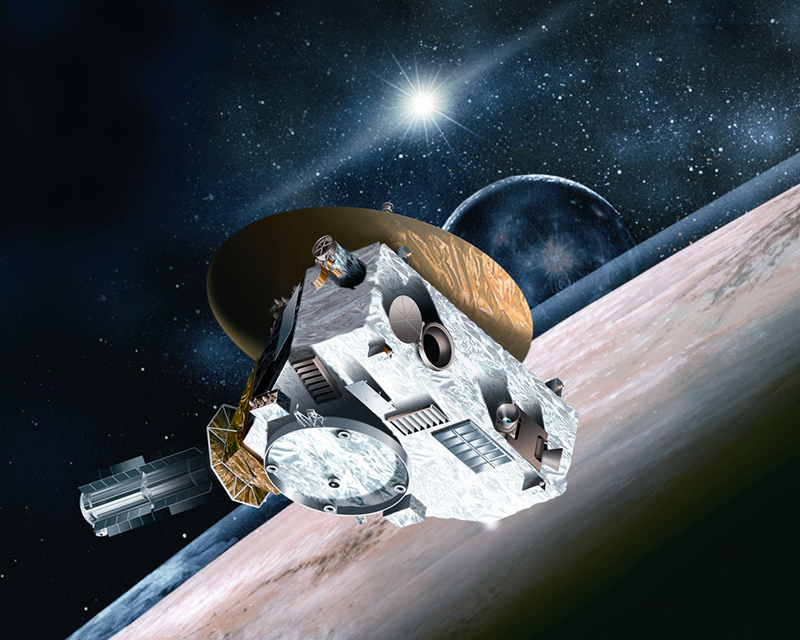General
How to Hold a Dead Star in Your Hand
Submitted by chandra on Tue, 2016-06-21 09:40
Illustration: NASA/CXC/K.DiVona
Click here to watch the recent TED talk for this feature!
Objects in space are rather far away. The Moon is our closest celestial neighbor at nearly a quarter million miles from Earth, and the nearest star, our Sun, is 93 million miles away.
These extreme distances mean that it’s usually impossible to touch real objects in space (meteorites that fall to the ground not withstanding). Advances in both astronomy and technology, however, now allow you to do the next best thing: hold a 3-D model of one based on real data.
The story behind such a remarkable feat starts with how astronomers study space. Unlike previous generations of sky gazers, today’s astronomers look at the Universe in many kinds of light, across the full electromagnetic spectrum. Through advanced telescopes and detectors, scientists can “see” from radio waves to gamma rays. Why is this important? We need to look at the Universe in all the types of lights to even begin to understand it.
Take X-rays, for example. Back in 1999, NASA’s Chandra X-ray Observatory was launched in order to observe the high-energy Universe including such things as colliding galaxies, black holes, and supernova remnants.
One such supernova remnant that Chandra studies is Cassiopeia A. About 400 years ago, in our own Milky Way galaxy, a star that was about 15 to 20 times the mass of our Sun, detonated in a supernova explosion.
Coding (and Coloring) the Universe
Submitted by chandra on Mon, 2016-06-13 09:21
Micro to macro
Illustration: NASA/CXC/K.Divona
When people ask me what I do for work, I often say that I’m a storyteller. It’s not that I stand on a stage with a microphone and narrate long tales to a rapt audience.
My stories are told differently, not through voice or music, but through lines of code and technical applications. They are stories, of science.
As an undergraduate, I began my career in molecular biology, looking at the tiny organisms that can transmit Lyme disease to humans aboard the Ixodes Scapularis (a.k.a., the Deer tick). But by the time I graduated, I was moving on to learn about another type of science: that of computers.
Help Wanted: A Universe of Images
Submitted by chandra on Mon, 2016-05-16 08:27
Images of our shared Universe provide snapshots of various phases of life and death, and different physical phenomena, found in locations across the cosmos. Modern telescopes allow us to “see” what the human eye cannot. This new generation of ground- and space-based telescopes has created an explosion of images for people everywhere to explore.
The Aesthetics & Astronomy project studies the perception of multi-wavelength astronomical imagery and the effects of the scientific and artistic choices in processing this astronomical data. The images come from a variety of space and ground-based observatories, including NASA’s Chandra X-ray Observatory and Hubble Space Telescope. Studies such as these can benefit astronomy across the electromagnetic spectrum of astronomical images, and may help visualization of data in other scientific disciplines.
New X-ray Observatory Comes Online
Submitted by chandra on Thu, 2016-02-18 22:27On February 17th, the Japanese Aerospace Exploration Agency (JAXA) launched a rocket into space with the X-ray Astronomy Satellite, also known as ASTRO-H, onboard.

Credit: NASA
Shortly thereafter, ASTRO-H separated from the spacecraft and deployed its solar panels. Operators then received data transmitted from the satellite and received at the Uchinoura ground station in Japan. All reports are that the satellite is currently in good health.
EXCITING NEWS: Direct Detection of Gravitational Radiation
Submitted by chandra on Thu, 2016-02-11 11:41It's a fitting coincidence. Just a few months after celebrating the 100th anniversary of Einstein's theory of General Relativity (GR), we have just heard that gravitational waves, a key prediction of GR, have been directly detected for the first time. The February 11th, 2016 announcement by the Laser Interferometry Gravitational-Wave Observatory (LIGO) team is one of the most important moments in the history of astrophysics. Here, I discuss how observations with NASA’s Chandra X-ray Observatory and other traditional observatories help complement the detection and study of gravitational waves.

Figure 1: The LIGO Hanford Observatory. Credit: Caltech/MIT/LIGO Observatory
Gravitational waves are produced by violent events, such as the collisions and mergers of neutron star or black hole pairs, or the collapse and explosion of massive stars in supernovas. As a September 2015 news release by LIGO eloquently explains,
A Carnival of Space Visits the Chandra Blog
Submitted by chandra on Mon, 2015-08-31 11:32Welcome to the latest installment of the Carnival of Space, a weekly round up of astronomy news co-hosted on various space science blogs. It’s a pretty big Universe out there so let’s get started!

Happy First Light Anniversary!
Submitted by chandra on Wed, 2015-08-26 09:55Sixteen years ago today, the first images from the newly-launched Chandra X-ray Observatory were released to the public. While these images were spectacular themselves, they also represented the promise of the amazing things that Chandra might be able to do in the future.
Chandra Looks to Pluto
Submitted by chandra on Tue, 2015-07-14 06:59On July 14th, the New Horizons spacecraft will fly by Pluto during its unprecedented mission to the outer Solar System. In addition to the data gathered by New Horizons and its suite of instruments, other telescopes – including the Chandra X-ray Observatory – will be pitching in to help astronomers learn more about this distant and icy world.

Artist conception of New Horizons Spacecraft.
Credits: Johns Hopkins University Applied Physics Laboratory/Southwest Research Institute
X-ray Astronomy and #girlswithtoys
Submitted by chandra on Tue, 2015-05-19 15:11There have been so many excellent images and messages being tied to the hashtag #girlswithtoys on Twitter over the past several days. We would love to be able to take some selfies with some of the many female scientists, engineers, and other professionals who use and run the Chandra X-ray Observatory. (Of course, the Director of Chandra is Belinda Wilkes, the first woman to lead one of NASA’s Great Observatories) Unfortunately, Chandra is currently in its highly elliptical orbit that takes it a third of the way to the Moon, so the spacecraft is unavailable for a snapshot.

Pages
Please note this is a moderated blog. No pornography, spam, profanity or discriminatory remarks are allowed. No personal attacks are allowed. Users should stay on topic to keep it relevant for the readers.
Read the privacy statement


